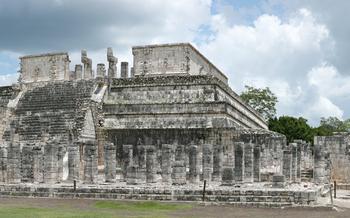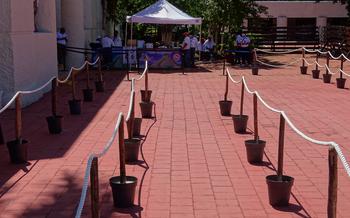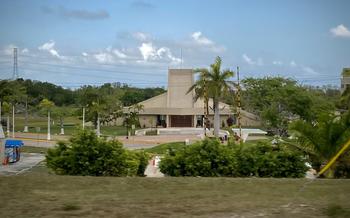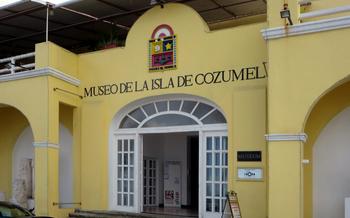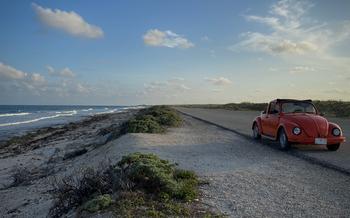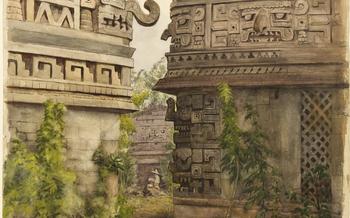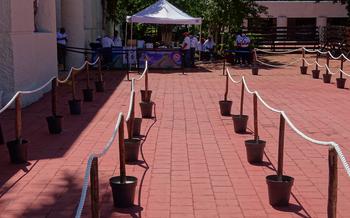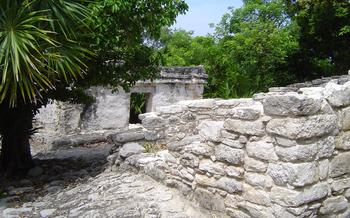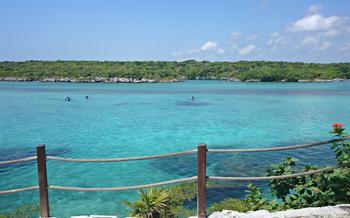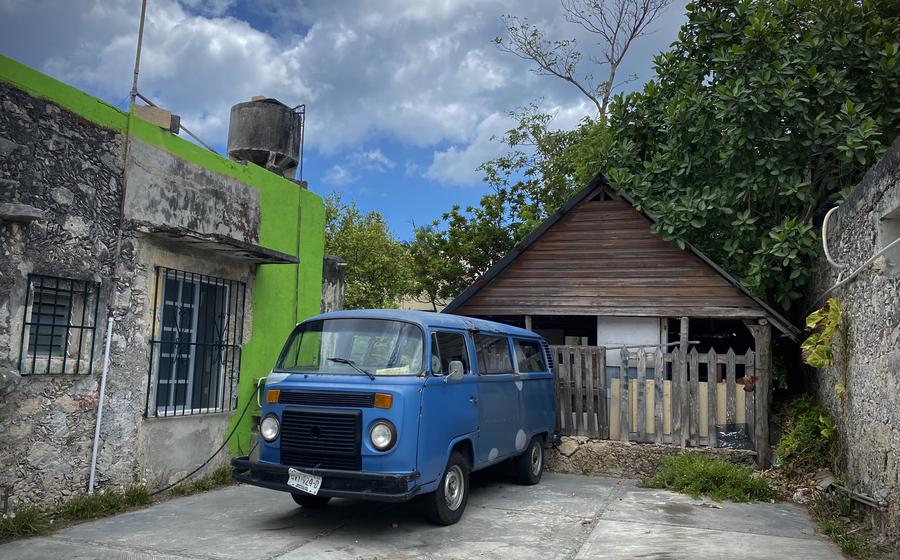
San Gervasio Mayan Archaeological Site
- San Gervasio Mayan Archaeological Site: A Journey Through Ancient History
- Exploring the Ruins of the Maya: A Step into the Past
- Unveiling the Secrets of the Cenotes: A Refreshing Dip in History
- A Glimpse into Mayan Rituals: The Significance of the Ball Courts
- Conquering the Heights: Climbing the Pyramid of Ka'na Nah
- Exploring the Museums: A Deeper Dive into Mayan History
- A Journey Through Time: The Story of the Maya
- Tips for Planning Your Visit: Making the Most of Your Time
- Safety First: Ensuring a Smooth and Secure Experience
- Going Beyond San Gervasio: Exploring Cozumel's Hidden Gems
- Capturing the Essence of Cozumel: Photography Tips for Memorable Shots
- Connecting with Local Culture: Embracing the Warmth of Cozumel
- Solo Travelers: Navigating San Gervasio Independently
- Insider Tip: Unveiling the Hidden Cenote
San Gervasio Mayan Archaeological Site: A Journey Through Ancient History
Among the alluring attractions of Cozumel, the San Gervasio Mayan Archaeological Site stands out as a testament to the rich history of the Maya civilization. Located in the heart of the island, this ancient city was once a thriving religious and ceremonial center, with its impressive structures serving as a testament to the Maya's architectural prowess and cultural legacy.
The site is home to numerous well-preserved temples, altars, and ball courts, each offering a glimpse into the daily life and rituals of the Maya people. Discover the intricate carvings and symbolism that adorn these structures, revealing stories of deities, rulers, and the cosmos. Artifacts unearthed during excavations, such as pottery, jade ornaments, and obsidian tools, provide further insights into the Maya's advanced craftsmanship and trade networks.
Exploring the Ruins of the Maya: A Step into the Past
Among the alluring attractions of San Gervasio, self-guided exploration offers an immersive experience for those seeking a deeper connection with the ancient ruins. Embarking on a self-guided tour allows for a flexible pace, providing ample time to ponder the significance of each structure and appreciate the intricate details that often go unnoticed in a group setting. Maps and guidebooks are readily available at the site's entrance, ensuring that visitors can navigate independently while gaining valuable insights into the history and culture of the Maya civilization. However, it's essential to remember that navigating the site's terrain can be challenging, as it involves walking on uneven surfaces and through dense vegetation. Proper footwear and a spirit of adventure are highly recommended for those opting for self-guided exploration.
Unveiling the Secrets of the Cenotes: A Refreshing Dip in History
Within the confines of San Gervasio, nature's wonders intertwine seamlessly with ancient history. Discover the allure of the cenotes, natural sinkholes that were once considered sacred by the Maya. These captivating water bodies, formed by the collapse of limestone bedrock, offer a refreshing respite from the tropical heat and provide a glimpse into the spiritual world of the Maya. The archaeological site boasts several cenotes, each with its unique charm and significance.
Designated swimming areas within the cenotes invite visitors to take a refreshing dip in the crystal-clear waters, surrounded by lush vegetation and ancient ruins. Snorkeling or diving enthusiasts can explore the underwater depths, where a vibrant tapestry of marine life awaits. The cenotes are home to a diverse array of aquatic creatures, including colorful fish, turtles, and even the occasional stingray.
Beyond their natural beauty, the cenotes hold profound cultural significance. The Maya believed that these water bodies were portals to the underworld, a place of both creation and destruction. Rituals and ceremonies were often conducted at the cenotes, where offerings were made to appease the gods and seek guidance and protection. The cenotes were also believed to possess healing properties, and people would bathe in their waters to cure illnesses or seek spiritual rejuvenation.
Unveiling the secrets of the cenotes at San Gervasio is an experience that transcends time. Immerse yourself in the beauty of these natural wonders, feel the sacred energy that lingers in the air, and connect with the ancient Maya culture in a way that few other places can offer.
A Glimpse into Mayan Rituals: The Significance of the Ball Courts
At the heart of San Gervasio, the ancient Maya built several ball courts, which played a crucial role in their religious and ceremonial practices. These courts, with their distinct elongated shape and sloped sides, were not merely arenas for sports but held profound cultural and spiritual significance.
The Maya ball game, known as Pok-ta-Pok, was more than just a game; it was a ritual deeply intertwined with Maya cosmology and mythology. The ball, made of solid rubber and often adorned with feathers or precious stones, represented the sun, a central figure in Maya beliefs. The game symbolized the cosmic battle between light and darkness, life and death, with the outcome determining the fate of the crops and the well-being of the community.
Archaeological findings at the ball courts, such as carved stone markers and elaborate sculptures depicting players and deities, provide valuable insights into the rituals associated with the game. These courts were not just places of competition but sacred spaces where the Maya sought to communicate with the divine, appease the gods, and ensure the continuation of life's cycles.
In contemporary times, the ball game continues to be celebrated and interpreted in various ways. Some Maya communities in Guatemala and Mexico still play a version of the game, preserving the ancient tradition. Additionally, the ball game has become a subject of academic research, with scholars exploring its symbolism, rituals, and cultural significance. Through these efforts, we gain a deeper understanding of this captivating aspect of Maya civilization and its enduring legacy.
Conquering the Heights: Climbing the Pyramid of Ka'na Nah
At the heart of San Gervasio lies the Pyramid of Ka'na Nah, the tallest structure within the archaeological site and a symbol of Mayan ingenuity. Towering over the surrounding landscape, this pyramid beckons adventurous spirits to embark on a challenging yet rewarding climb. Although the ascent requires a moderate level of fitness, designated pathways and safety measures ensure a secure and enjoyable experience for all visitors.
As you ascend the ancient steps, the lush jungle canopy unfolds before you, revealing glimpses of the Caribbean Sea's vibrant turquoise waters. The panoramic views from the pyramid's summit are simply breathtaking, offering a bird's-eye perspective of the entire archaeological site, the surrounding jungle, and the vast expanse of the Caribbean Sea.
Beyond its architectural grandeur, the Pyramid of Ka'na Nah holds significant astronomical significance. The Maya, renowned for their advanced understanding of celestial movements, aligned the pyramid's orientation with the summer solstice. During this astronomical event, the rising sun casts a perfect shadow that aligns precisely with the pyramid's central staircase, creating a mesmerizing spectacle that pays homage to the Maya's profound connection to the cosmos.
Exploring the Museums: A Deeper Dive into Mayan History
The San Gervasio Mayan Archaeological Site is home to two on-site museums that offer a deeper dive into the history and culture of the Maya civilization.
The first museum, located near the entrance of the site, showcases a collection of artifacts excavated from San Gervasio and the surrounding area. These artifacts include ceramics, sculptures, tools, and other everyday objects that provide a glimpse into the daily lives of the Maya people.
The second museum, located closer to the pyramid of Ka'na Nah, focuses on the religious and ceremonial aspects of Mayan culture. It houses a collection of stelae, altars, and other ritual objects that shed light on the Maya's beliefs and practices.
Both museums feature interactive displays and multimedia presentations that enhance the visitor experience. Guided tours are available for those who want to learn more about the exhibits and the history of the Maya civilization.
Visiting the museums at San Gervasio is a great way to gain a deeper understanding of the Maya culture and its enduring legacy.
A Journey Through Time: The Story of the Maya
The Maya civilization, with its rich history and cultural legacy, has captivated the world's imagination for centuries.
The Maya emerged in the Yucatán Peninsula and neighboring regions around 2000 BC, establishing a sophisticated civilization that spanned over 3,000 years.
Their advanced knowledge in astronomy, mathematics, writing, and architecture left an indelible mark on the region, influencing subsequent Mesoamerican cultures.
The Maya civilization was not a single, unified empire but rather a collection of independent city-states, each with its own ruler and political structure.
Over time, these city-states interacted, competed, and sometimes formed alliances, creating a vibrant and complex network of relationships.
The Maya civilization reached its peak during the Classic period (250-900 AD), during which time many of the iconic cities, including Chichén Itzá and Tikal, were built.
However, around the 9th century AD, the Maya civilization experienced a decline, with many cities abandoned and populations shifting.
The reasons for this decline are still debated, but factors such as environmental changes, warfare, and internal political instability are believed to have played a role.
Despite their decline, the Maya civilization left an enduring legacy that continues to shape the cultural fabric of Mexico and Central America.
Their art, architecture, and scientific knowledge continue to inspire and fascinate, serving as a testament to the ingenuity and resilience of this ancient civilization.
Tips for Planning Your Visit: Making the Most of Your Time
Planning your visit to San Gervasio Mayan Archaeological Site ensures a smooth and enjoyable experience. The ideal time to visit is during the dry season from November to April when the weather is pleasant, with minimal chances of rain.
Essential packing includes comfortable shoes, insect repellent, and a hat for sun protection. Hydration is crucial, so bring a reusable water bottle to stay refreshed throughout your exploration. Snacks are also recommended to keep your energy levels up.
Capture the beauty of the site with photography, but be mindful of the lighting conditions, as the harsh midday sun can create unflattering shadows. Sunrise and sunset offer the best light for stunning photos.
Safety First: Ensuring a Smooth and Secure Experience
San Gervasio Mayan Archaeological Site prioritizes the safety and security of its visitors. Clearly marked paths guide you through the site, ensuring you stay on designated trails and avoid potential hazards. Security personnel are present to provide assistance and ensure a safe environment.
Wildlife encounters are a possibility within the site, as it is home to various animal species. Respect their presence and maintain a safe distance. Avoid feeding or disturbing the wildlife to prevent any unwanted interactions.
Sun protection is essential in Cozumel's tropical climate. Apply sunscreen regularly, wear a hat to shield your head from the sun's rays, and consider sunglasses to protect your eyes.
Emergency preparedness measures are in place to handle any unforeseen situations. Familiarize yourself with the emergency procedures and evacuation routes posted throughout the site. In case of an emergency, remain calm and follow the instructions provided by the site staff or emergency personnel.
Going Beyond San Gervasio: Exploring Cozumel's Hidden Gems
While San Gervasio is a must-visit destination, Cozumel offers a plethora of other attractions that will enrich your travel experience. Discover the captivating history of the island at the Cozumel Museum, home to an impressive collection of Mayan artifacts and exhibits. Immerse yourself in the vibrant marine life by embarking on a snorkeling or diving excursion, where you'll encounter colorful coral reefs, playful dolphins, and majestic sea turtles. For a unique perspective, rent a bicycle and explore the island's scenic coastal roads, passing by secluded beaches and charming fishing villages.
Indulge in the flavors of Cozumel's cuisine at local restaurants, where you can savor fresh seafood dishes, traditional Mexican fare, and international delights. Shop for unique souvenirs and handicrafts at the local markets, where you can find everything from handmade jewelry to colorful textiles.
Capturing the Essence of Cozumel: Photography Tips for Memorable Shots
Cozumel's beauty extends beyond its ancient ruins, encompassing stunning landscapes, vibrant marine life, and a rich cultural heritage. Capturing the essence of this island paradise through photography requires an understanding of camera settings, composition techniques, lighting conditions, and unique perspectives.
Camera Settings: - Aperture: Use a narrow aperture (high f-stop number) to achieve a deep depth of field, ensuring that both the foreground and background are in focus. - Shutter Speed: Choose a shutter speed fast enough to freeze motion, especially when photographing wildlife or moving subjects. - ISO: Keep the ISO low (e.g., ISO 100-200) to minimize noise and maintain image quality.
Composition Techniques: - Rule of Thirds: Position key elements along the lines or at the intersections of the thirds grid for a visually appealing composition. - Leading Lines: Use natural elements like paths, fences, or gaze of a subject to draw the viewer's eye into the image. - Negative Space: Incorporate areas of empty space to create a sense of balance and depth.
Lighting Conditions: - Golden Hour: Capture the warm, diffused light of sunrise or sunset for stunning shots of the ruins and landscapes. - Overcast Days: Take advantage of the soft, even light on overcast days for more balanced exposures. - Backlighting: Create dramatic silhouettes by positioning the sun behind your subject.
Unique Perspectives: - High Vantage Points: Climb to the top of the pyramid or find elevated spots for breathtaking panoramic views. - Low Angles: Shoot from a low angle to emphasize the grandeur of the ruins or the vastness of the ocean. - Creative Angles: Experiment with different angles and perspectives to add a unique touch to your photographs.
Connecting with Local Culture: Embracing the Warmth of Cozumel
Cozumel's vibrant culture is an integral part of its allure, and visitors have the opportunity to immerse themselves in the local way of life. Engaging with the local community provides a deeper understanding of the island's history, traditions, and customs. Attend local festivals and events to witness the colorful displays of music, dance, and traditional costumes. Participate in cultural experiences such as cooking classes or guided tours that focus on Mayan culture and heritage. Learning a few basic Spanish phrases can go a long way in building connections with the locals and enhancing the overall travel experience. Remember to be respectful of local customs and traditions to ensure a positive and enriching interaction with the people of Cozumel.
Solo Travelers: Navigating San Gervasio Independently
As a solo traveler, exploring San Gervasio can be an enriching and rewarding experience. While traveling alone may come with unique challenges, it also presents opportunities for self-discovery and personal growth. To ensure a safe and fulfilling visit, consider the following tips:
-
Safety First: Prioritize your safety by informing your hotel or tour operator about your plans. Be aware of your surroundings and avoid exploring secluded areas alone.
-
Guided Tour Options: Joining a guided tour specifically designed for solo travelers can be a great way to learn about the site's history while meeting like-minded individuals.
-
Meeting Fellow Travelers: The archaeological site often attracts solo travelers from around the world. Initiate conversations and strike up friendships with fellow explorers.
-
Solo Exploration Tips: Plan your route in advance using a map or guidebook. Carry a fully charged phone and a whistle for emergencies. Stay hydrated and bring snacks to sustain your energy levels.
Insider Tip: Unveiling the Hidden Cenote
Beyond the well-known cenotes within the San Gervasio Archaeological Site, there lies a hidden gem known only to a select few. This secret cenote, tucked away from the main tourist paths, offers a unique and serene swimming experience amidst the ancient Mayan ruins.
To find the hidden cenote, you'll need to venture off the beaten track and follow a discreet trail that leads into the heart of the jungle. The path may be overgrown, requiring a sense of adventure and sturdy footwear. Once you reach the cenote, you'll be greeted by a secluded oasis, surrounded by lush vegetation and towering trees.
The hidden cenote is characterized by its crystal-clear waters, inviting you to take a refreshing dip. The water is often calm and tranquil, providing an ideal environment for swimming and relaxation. As you float in the cenote, you can marvel at the surrounding Mayan ruins, creating a truly immersive experience that blends history with nature.
Preserving and conserving the hidden cenote is of utmost importance. Please respect the natural environment by avoiding the use of sunscreen or other chemicals that could harm the delicate ecosystem. Remember to pack out any trash you bring in to ensure the cenote remains pristine for future generations to enjoy.
With its secluded location and serene atmosphere, the hidden cenote offers an unforgettable experience for those seeking a glimpse into the lesser-known wonders of San Gervasio. Embrace the spirit of exploration and venture off the beaten path to discover this hidden gem for yourself.
